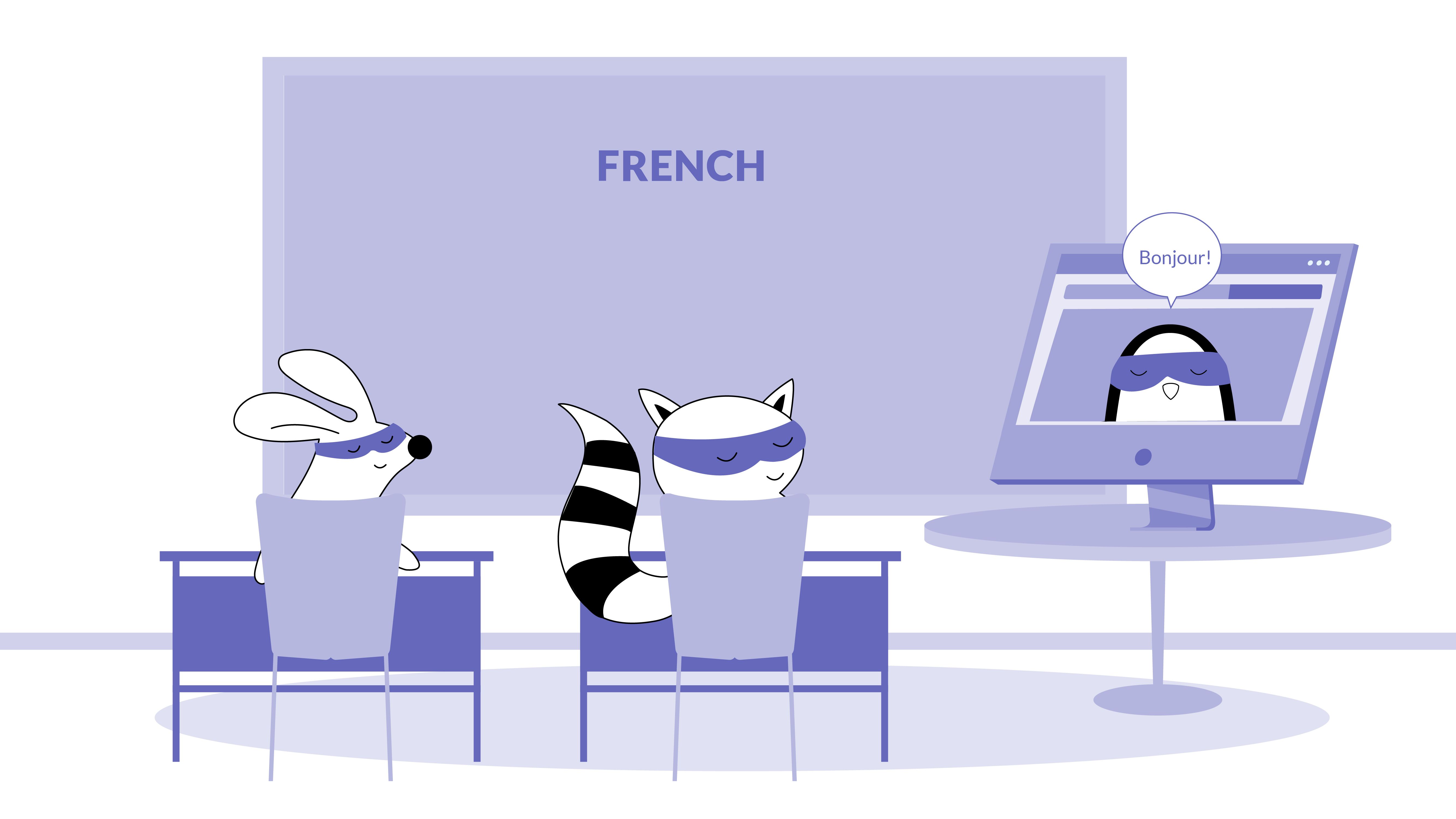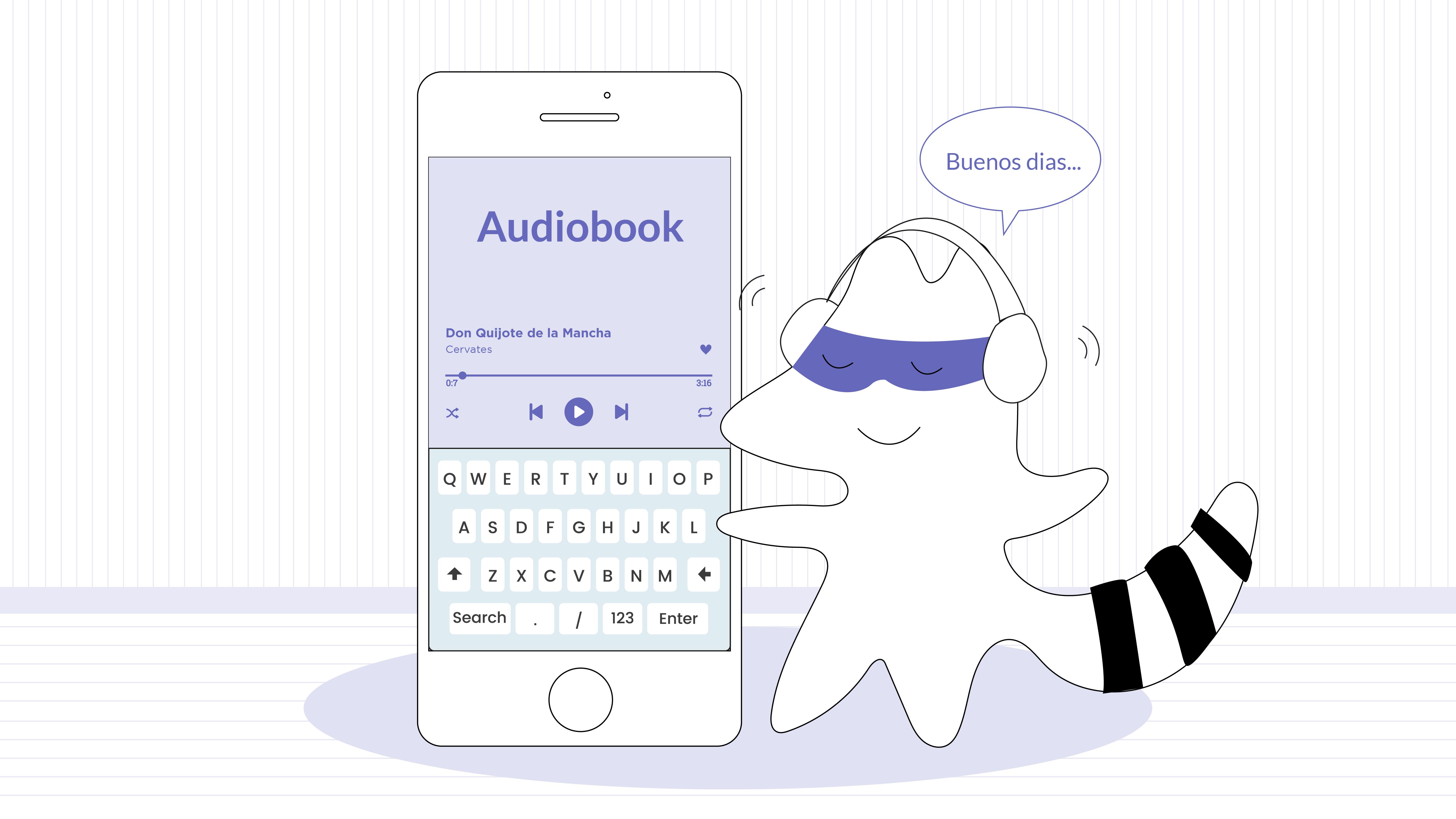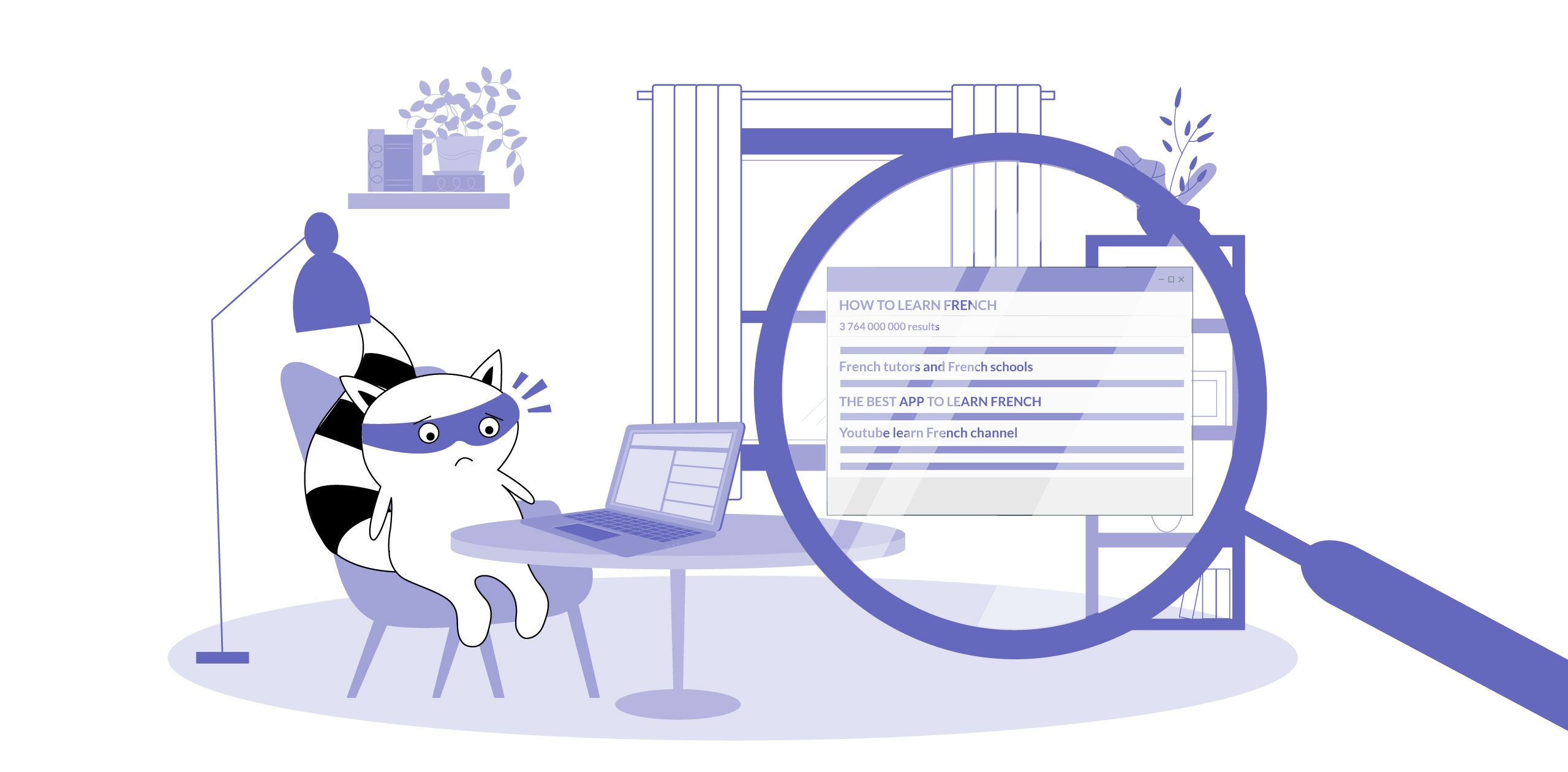
Learning a new language can be tough -- especially if you don't have tools that work with your learning style. Fortunately, it's never been easier to find learning options that suit your needs, and there are tons of mobile apps that can help you start your language journey today.
But, if you don't know anything about choosing a language learning app, the variety can seem overwhelming. So, we're here to help! Keep reading to find out more about some of the best and most unique apps on the market, and figure out which one is right for you.
Learn French with Langster
Best for Daily Learning
Langster
Langster is a CEFR-graded language learning app that teaches new vocabulary and grammar naturally through fun stories. While reading along to stories suited for your level of knowledge, you’ll have access to instant translations and grammar explanations to help you learn new vocabulary.
Plus, save new words and phrases to flashcards so you can practice them more later. Langster also lets you listen to audio from native speakers, so you can practice reading stories out loud and make sure your pronunciation is correct.
And, aside from the app itself, Langster’s blog is filled with tons more helpful articles like this one for whatever questions you have about the language learning process.
Pros
With new stories daily on topics from news to short fiction and everything in between, Langster is the perfect app to keep learners engaged and give you experience with your target language in real-life contexts.
The combined approach of language immersion within the stories and spaced repetition for target vocabulary will also help you retain new knowledge faster than traditional textbooks alone — plus, you’ll have more fun!
The stories only take a few minutes to read, so Langster is also a great choice for learners who don’t have a lot of time in their day for language practice. Reading a new story or practicing with some flashcards is the perfect way to make your bus ride or lunch break more productive!
Cons
Langster is only currently available in French, Spanish, English, and German, so it’s not as extensive as some other language-learning apps. Additionally, the free version of the app lets you access a few free stories, but they don’t rotate daily, so serious learners may lose motivation without constant new material.
Price
As mentioned, Langster does offer access to a few rotating free stories, and you can still access all the mentioned features for these stories — flashcards, audio examples, and supplementary grammar explanations.
But, if you find yourself going through the free content too quickly and getting hungry for more, a monthly subscription will be $12.99 a month or $59.99 a year, which gets you access to more than a thousand stories whenever you want.
Langster also offers a seven-day free trial, so you can make sure you’ll benefit from the investment.
Who Is It For?
Langster is best for learners who already have a solid foundation of their target language and want to improve their reading comprehension, vocabulary, and listening. Langster works great as a supplement to traditional learning materials and is also a great choice for educators who want to boost their students’ engagement and motivation with some fun stories.
Best for Intuitive Language Learning
Rosetta Stone
Rosetta Stone was one of the first virtual foreign language learning programs, and it maintains a strong reputation today. Rosetta Stone uses the immersion method to guide users through tightly structured but highly interconnected lessons- similar to a real class format.

However, it also has one of the higher price tags on this list. So, before you make a purchase, it's best to know exactly what Rosetta Stone is about, and if it will fit your needs. Let's look more in-depth.
Pros
Rosetta Stone uses the immersion method and audio-based learning to teach users a new language naturally. You'll learn to associate pictures of real-life scenarios and objects with associated audio recordings in your target language.
This teaching method employs audio, visual, and vocal learning techniques to help your brain form connections. Along with seeing the target image and listening to the associated vocabulary, the Rosetta Stone app includes high-end speech recognition software. So, as you practice your speaking skills, you'll get accurate feedback on your pronunciation.
Cons
While Rosetta Stone teaches speaking and listening skills, grammar seems to be a low priority in their approach. The goal is to learn a new language intuitively, but without fully understanding the logic and structure behind what you're saying, you might have trouble applying this new knowledge in real-life situations.
Plus, without translations of the phrases you're prompted to repeat, language learners run the risk of misinterpreting what words mean.
Finally, the strict structure also makes this program ill-suited for learners interested in targeting certain topics, as the app doesn't seem to let you jump around. Nor can you revisit previous lessons if you want more practice.
Price
Rosetta Stone offers several different subscription plans ranging from $12 to $15 a month, and this price buys you access to all the foreign languages they have available. However, you can also buy lifetime access for only $214.80 -- definitely a worthy investment if you plan on trying to learn multiple languages or want to keep revisiting to polish your skills.
Who Is It For?
The Rosetta Stone app is best for auditory and visual learners who will be able to pick up on the more structural aspects of the new language intuitively. Still, for the best results, we recommend supplementing this program with grammar lessons and a dictionary to double-check the vocabulary.
Best Fun App
Duolingo
Duolingo is widely considered the best free language learning app on the market, with over 98 million new app downloads in 2022. However, it might be even more well-known for its owl mascot!
Duolingo works by teaching the target language through games and puzzles, but beneath this gamified approach, it's simple repetition. Let's learn more!
Pros
Duolingo helps users learn a new language with spaced repetition in an engaging game format. It isn't just vocabulary words you'll learn, though; Duolingo helps you practice reading, speaking, and listening. It even includes audio from native language speakers so you can perfect your pronunciation.
Perhaps the best part about this app is that it lets you learn at your own pace -- most language lessons are between 5 and 20 minutes, perfect for fitting in during your daily commute. Plus, there's over 40 languages you can study!
Cons
Duolingo takes its game aspect seriously, which includes a limited number of "lives" that are penalized for mistakes. This may affect some users' momentum, since they'll have to walk away for a bit before trying again. Additionally, there are built-in ads. Both of these features can be opted out of in the paid version.
Another common criticism of the app is that it seems more geared toward children than adults. It focuses on vocabulary and simple, useful phrases but does not go very in-depth about the grammar logistics. In fact, the lack of logic and context behind some examples has become a running internet joke, which can be credited to the fact that it contains user-created content.
Price
The paid version of the app costs $6.99 a month, or slightly less for longer-term subscription plans. For that price, you get to remove ads, get unlimited "lives," and other useful features like offline mode.
Who Is It Best For?
The short lessons and free version make this app perfect for beginners who want to get a feel for learning a new language without committing to a paid plan yet.
And it's also great for intermediate learners who want to use it as a supplement to other learning materials or use the game aspect to keep track of their progress.
Best Course Customization
Babbel
Babbel is one of the oldest language learning apps on the market, plus being one of the most customizable! It uses the teaching methods of spaced repetition and cognitive psychology to help new knowledge be absorbed into your long-term memory.
The engaging lesson content, focusing on real-life situations and interesting topics like art and politics, helps, too.
Pros
Babbel's biggest draw is the course customization. Users have full control over what to study and when, so you can go at your own pace and target the areas you want to work on most. Their in-depth grammar lessons are great for helping learners understand the structure and logic of their target language.
The lessons themselves are also very unique, designed by language teachers to keep you engaged with a variety of interesting topics. And, as a result, the vocabulary, concepts, and phrases you learn while studying are a lot more well-rounded than some language apps provide. They even use their own voice recognition software to help you with speaking practice!
Cons
Live lessons with a teacher and fellow students are only available with an additional subscription. So, the average user won't have as much opportunity to practice their conversational skills as they would with the more interactive lessons in other language learning apps. The limited speaking practice is done with speech recognition software.
Additionally, many users have noted that the lessons can feel a bit tedious, and the app doesn't provide a whole lot of incentive to keep going when things get tough.
But, depending on which language you're studying, you might not have very far to go -- while the content for Spanish and French is substantial, other languages only offer lessons at the beginner level.
Price
Babbel offers a seven-day free trial so you can ensure it's a good fit, but after that, it will cost $13.95 a month to access.
An annual plan is offered at a reduced cost of $83.40.
Who Is It Best For?
Babbel is suited for all levels of learners who want to learn a new language in the context of culture. It's also best for users who prefer a more structured, class-like format to learning and are prepared to keep themselves motivated.
Best for a Classroom Environment

Fluenz
Fluenz takes a unique approach to language learning with a structured, class-like format and a wide variety of features that you won't find in many other language-learning apps. However, it's a serious investment. Let's look into it.
Pros
Like Babbel, Fluenz uses informative language lessons that go in-depth into the grammatical logic of the new language. The main difference is that while Babbel provides brief text explanations, Fluenz uses video clips. For the most part, which of these is more effective comes down to personal preference.
Each lesson also comes with a series of practice exercises to help cement new knowledge. Outside the lessons are more fun features to help users improve their language skills. The flashcard feature lets you choose between just selecting the correct answers and actually writing them in, so you learn how to spell new words and use accent marks.
There is also a forum called Fluenz Commons where users can have real conversations with each other and ask questions. Two other unique features are the immersion programs they offer -- both online and in person -- and a specific homeschooling program.
Cons
While Fluenz has a lot of unique features, the lessons are not always as in-depth as they could be, and the practice exercises can get a little repetitive. Additionally, Fluenz only offers programs in seven languages (counting both European and Latin American Spanish).
Each language has five levels except for Mandarin, which only has three and only teaches Pinyin rather than Chinese characters.
The other main criticism is that, unlike many other language learning apps, Fluenz does not use voice recognition. So, while there are some speaking exercises, you'll have to judge for yourself if you said everything right. Overall, writing is definitely the main focus.
Price
Fluenz is the most expensive language learning app on this list at $398 for a complete course in one language. Fluenz doesn't offer a free trial, but they do have a 30-day money-back guarantee if you turn out not to like it.
Despite the price, some users might like that they only have to pay once rather than having a recurring subscription.
Who Is It Best For?
Fluenz is a great choice for learners who want as close to a virtual classroom as they can get and are willing to spend a little extra money on it.
The programs are pretty comprehensive, so this app is suitable for beginner and intermediate learners alike, though advanced learners would likely not get much use from it.
Best Auditory Learning App
Pimsleur
Pimsleur is one of the oldest language-learning apps on the market, with a reputation to match. Pimsleur is incredibly unique, using its own teaching methods and an almost entirely auditory learning style to help users learn a new language.
Pros
The Pimsleur Method is a scientifically backed variation of the spaced repetition system that helps users learn faster by gradually increasing the period of time between repetitions of a target word.
But this app really stands out because it doesn't just repeat the vocabulary word for users to hear. It forces participation by asking you how the word is pronounced or using a real-life scenario to have you use it in a phrase.

The other unique thing about Pimsleur's program is that it's designed specifically to address a common hurdle learners have when conversing with native speakers: becoming tongue-tied.
Every Pimsleur lesson includes mini-challenges that simulate real conversations, so users can work through their fear and learn how to converse naturally.
Cons
Like most other apps on this list, Pimsleur isn't intended as a path to fluency. Since it's almost entirely audio-based, you will need supplemental materials to improve writing and spelling, and learn the ins and outs of grammar.
Additionally, Pimsleur focuses on teaching sets of commonly used words and phrases rather than entire categories of vocabulary. Users will learn enough to confidently hold simple conversations, but broadening your vocabulary will depend on continuing to practice independently.
Price
Pimsleur offers a range of subscription options starting at $14.95/month for audio-only. A premium plan is offered at $19.95/month, and $20.95/month for all access, which includes unlimited languages rather than just one.
Who Is It Best For?
Pimsleur is best for auditory learners who really want to prioritize conversational skills and confidence. It's suitable for both beginner and intermediate learners who plan on supplementing with other materials to strengthen their grasp of grammar and writing.
Which One Is Right For You?

There you have it: our picks for some of the best language-learning apps on the market. We hope this list has helped you find a language app that suits your needs and learning style, but remember that these options are far from exhaustive -- there are lots of cool language-learning apps still out there!
So, if you're interested in looking further, why not start with Langster? Our unique approach teaches language skills through fun, engaging stories that will also give you insight into the culture of the language you're learning.
So, what is Langster the best at? Langster uses the immersion method -- you'll read stories in your target language that are suited to your current comprehension level.
Each story is also accompanied by audio from native speakers, plus access to instant translations and short grammar explanations, so you can understand what you're reading from all angles. In short, Langster ticks a lot of boxes. Sounds interesting? Download the app today to start reading your first free story!








